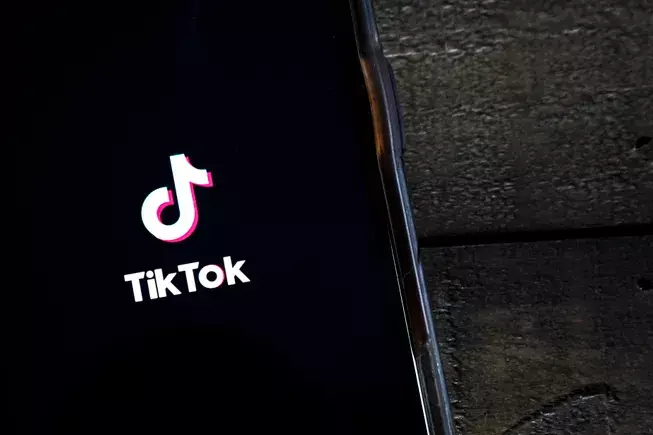In the ever-evolving landscape of social media, TikTok’s latest maneuver reveals an audacious effort to adapt to political pressures while maintaining its global dominance. The company’s development of a U.S.-only version—codenamed “M2”—marks a significant pivot in how it approaches regulation and user engagement. Rather than simply complying with government demands, TikTok is positioning itself to retain operational control while appeasing American regulators through a tailored, localized app. This strategy suggests a nuanced understanding of the geopolitical climate, balancing corporate interests with national security concerns.
The phased rollout, slated for early September with user compliance deadline by March 2026, exposes TikTok’s readiness to navigate a complicated regulatory environment. Users will be required to transition to this separate version to continue accessing TikTok’s services—which, on the surface, might seem intrusive or disruptive. However, from a strategic standpoint, this move can be interpreted as a proactive step that allows ByteDance to settle regulatory disputes without losing its foothold in the U.S. The question is whether this approach will truly satisfy U.S. authorities, or merely serve as a Band-Aid that temporarily placates oversight.
What makes this development particularly compelling is the hinted distinction between the core app and the U.S.-specific version. The company’s intent appears to be maintaining full algorithmic control in regions outside the U.S., even as it complies with the restrictions imposed in America. This dual-layered approach risks fragmenting user experience but offers the advantage of safeguarding proprietary features—like the platform’s highly addictive content recommendation system. The significance of this cannot be overstated: TikTok’s algorithm is its lifeblood, fueling engagement and ad revenue worldwide. If a separation means surrendering algorithm control in the U.S., it may diminish the app’s addictive appeal domestically — a risky tradeoff.
Geopolitical Games: The Implications of Ownership and Control
This move gains even more complexity when viewed through the lens of international politics. The U.S. government has been relentless in scrutinizing TikTok, citing national security concerns tied to Chinese government influence. Efforts to limit foreign ownership, restrict algorithm access, and even potentially force a sale have become part of the political narrative surrounding the platform. Yet, the reality is more nuanced: as TikTok prepares to launch “M2,” it is navigating a delicate balancing act—trying to shield its core business from full governmental control while placating regulators with a localized, limited-access version.
The recent hints of a sale, possibly to a consortium of well-financed American investors, introduce fresh uncertainty. President Trump’s statement about a “very wealthy” buyer group indicates a readiness to move beyond the limbo that has characterized TikTok’s U.S. fate for years. However, whether this deal will genuinely change ownership or merely restructure control remains to be seen. If successful, it could serve as a blueprint for other Chinese tech giants seeking to mitigate regulatory risks while preserving their global ambitions. Conversely, this strategy could backfire if the U.S. regulators interpret the separation as insufficient or if the algorithm’s core functionalities are compromised, reducing user engagement and ad revenue.
The political stakes are high, and TikTok’s approach seems driven by a necessity to remain not just competitive but relevant. For Chinese tech firms, the pressure is not only commercial but also existential—resisting full-scale separation from their innovations and strategic assets. The outcome will likely shape the future of cross-border technology ventures and their relationship with government oversight.
Will this be a Win—or Will it Erode TikTok’s Power?
Ultimately, the success of TikTok’s reimagined American model hinges on several volatile factors. Can the company preserve the addictive quality of its platform while conforming to legal constraints? Will the new version be seamless enough to prevent alienating users? And perhaps most critically, can TikTok navigate the complex geopolitics to preserve its global footprint?
The proprietary algorithm, arguably TikTok’s secret sauce, might face restrictions that diminish its effectiveness if access is limited or restructured. That prospect raises difficult questions about whether the app can retain its virality—an asset that fuels growth, retention, and monetization. If the new U.S.-focused version feels inferior or less engaging, TikTok risks losing its competitive edge within the American market, ultimately impacting its global valuation.
Furthermore, the political drama surrounding potential sales and regulatory crackdowns continues to cast a shadow. The company’s strategic dance of local adaptation and high-stakes diplomacy demonstrates an evolution beyond simple compliance—symbolizing a broader shift in how global tech giants are forced to operate in the age of geopolitical tensions. If anything, TikTok’s latest developments reflect a core truth: in the digital age, control over data and algorithms is tantamount to control over the platform’s destiny. Whether they succeed or stumble, TikTok’s next chapter will be a defining example of how tech companies can or should navigate the tangled nexus between innovation, regulation, and geopolitics.


Leave a Reply